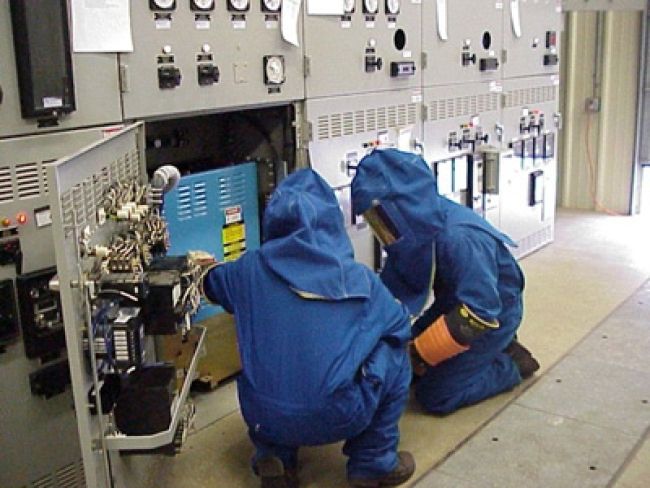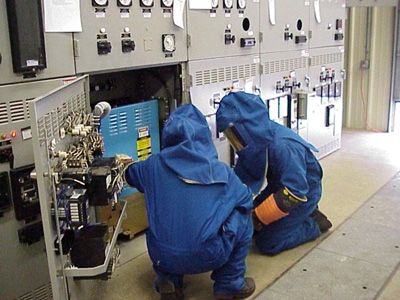
The Field Observation: A Proactive Safety Methodology

Electrical utilities are among the most hazardous industries in which to work. And since the early days of power distribution, utilities have investigated and analyzed fatalities and other incidents in an effort to prevent recurrences.
One proven way to help verify and measure the effectiveness of an organization’s safety efforts is to conduct field personnel observations – or, in OSHA terminology, “inspections” – on a consistent basis. Conducting these observations enables the organization to take a firsthand look at what is going on in the field, as well as document employees’ demonstration of their knowledge and ability to work safely. The practice also sends a message to employees that the company cares about their safety.
Five Goals of Field Observations
There are five goals we hope to achieve when we observe workers in the field.
1. To assure compliance with the requirements of OSHA 29 CFR 1910.269(a)(2)(iv).
Paragraph 1910.269(a)(2)(iv) states the following: “The employer shall determine, through regular supervision and through inspections conducted on at least an annual basis, that each employee is complying with the safety-related work practices required by this section.”
Note that the word “and” in the preceding paragraph changed from “or” in 2014, which packed a big punch. With that change, conducting annual inspections of field personnel – which include lineworkers, substation workers, generation electrical workers, meter personnel and relay technicians – became a regulatory compliance issue. But while OSHA now requires inspections at least once a year, the intent is to audit performance as necessary to ensure employee safety. Another observation also should be conducted after any corrective action has been implemented to ensure all is going smoothly.
2. To provide leading indicators.
Employers must record their injury and illness statistics. These records – which are considered lagging indicators – identify past trends and can help a company measure itself against similarly sized companies. Overall, however, lagging indicators have little value to impact the safety culture of an organization.
Conducting regular field personnel observations, on the other hand, helps to gauge the efficacy of a company’s safety program to determine if it has been effectively implemented. Observations also can provide a means to forecast and avoid future incidents by identifying and rectifying deficiencies on the spot.
3. To provide a mechanism to bond with employees.
Workers will respond to the way they are treated by observers on the job site. By providing positive feedback – such as praise for a job done well and safely – observers can build good relationships with workers and encourage more of the same behavior.
4. To determine the adequacy of training, written programs, tools and equipment.
Performing observations and tracking data help companies analyze trends so that they can determine future safety-related needs, such as training on specific topics; new or revised policies and procedures; and the purchase of new PPE, tools and equipment.
5. To reinforce the company’s safety culture.
A surprise visit to the field is not always well taken by employees, especially at the beginning of an observation program, but attitudes can change over time. If done the right way, most employees will learn to embrace the visits.
Before You Begin
Before you begin an observation program at your company, it’s important that there is buy-in from top leadership. Once they sign on to the program, the CEO and other senior management personnel should regularly participate in field observations. Prior to any visit, be sure they understand the PPE requirements as they enter the work area, such as steel-toe boots, high-visibility vests, arc-rated clothing, hard hats and safety glasses. This will support field personnel acceptance of the observation program and help to strengthen the safety culture of the organization.
Corrective action policy is another important item to consider as you develop the observation program. If you have a policy that requires a letter of reprimand be written for any and all safety infractions, it will be tough to get the observation program off the ground. You may need to negotiate a new policy or an addendum to the existing policy to allow for coaching related to minor infractions.
Performing an Observation
Safety management personnel should facilitate the observation program, but they should not conduct all field observations. Observations are best performed by operations supervisors and occasionally their managers, with spot checks from safety managers or other qualified individuals who don’t work directly with those being observed. One of the benefits for supervisors tasked with performing observations in the field is that they are given the opportunity to spend time connecting with field personnel, listening to their concerns and praising them for the safe work practices identified.
In order to be consistent, observers must be trained on how to conduct an observation, including:
- What actions, equipment, PPE and work practices to look for.
- Ways to implement coaching and corrective action when infractions are identified.
- Methods of rewarding safe work practices.
- How to handle different types of personalities.
- Scoring observations in the field.
To effectively conduct a field observation, plan on being on-site for no less than one hour. If more than one crew is present, two to three hours may be best. For meter personnel observations, plan to ride with the employee to observe both their driving practices and performance of tasks. Power plant operators who may be responsible for racking and locking out breakers can be asked to perform a simulated drill if doing the work live is not an option.
Taking photographs throughout the observation process may be beneficial. They can be used later for training purposes. However, be sure to use your best judgment as to the types of pictures you take and when and where you use them.
If infractions or deficiencies are identified during an observation, take corrective action immediately, beginning with having a one-on-one discussion with the crew leader. Avoid discussion of the matter in front of other employees unless the discussion is related to an activity that includes the entire group.
When an infraction occurs while an observation is taking place, that’s a great time to find out why it happened. For example, perhaps a worker isn’t wearing the appropriate PPE because it doesn’t fit correctly and is causing discomfort. The corrective action would be to provide the worker different PPE that fits well and works effectively. Major life-threatening infractions – such as not grounding equipment when working de-energized without PPE, or failure to wear rubber gloves within the minimum approach distance – should prompt an immediate shutdown of work and must be addressed more firmly.
Scoring, Tracking and Trending
Once the observation is complete, it should be scored, and the score should then be shared with all field personnel. Always emphasize good work practices first, and then offer feedback about what needs improvement in order to achieve a better score in the future.
The format of the observation documentation should be developed to include a scoring system that is as objective as possible to prevent inconsistencies among the various personnel conducting the observations. In general, the documentation format should be a simple checklist that requires only minimal data entry, allowing the most time for inspectors to observe. You can use paper checklists, or there are electronic versions that work well and can be downloaded to smartphones, provided the checklists can be seen and used in direct sunlight.
The outcome of an observation should be measurable and quantifiable. Trending may be achieved by separating the observation into parts, such as tools and equipment, PPE and work practices. Measuring these items separately will help to target deficiencies and develop a means to correct infractions efficiently and effectively. The scoring system should be weighted according to the level of risk (e.g., 1 – minor, 3 – moderate, 10 – major), which fosters objectivity among observers. Of course, as noted earlier, identification of a high-risk hazard should be cause for immediate shutdown of the job.
After the observation is complete and the results have been shared with field personnel, the data should be entered into a tracking system that provides reporting capabilities. The system may be developed by the safety department or they may choose to use a commercial program. Either way, the system should enable users to measure leading indicators and identify unsafe trends to help target at-risk areas. The reports generated can provide valuable information to upper management and regulatory agencies regarding the effectiveness of the company safety program.
Summary
Field observations are required by OSHA, but more importantly, they provide a valuable tool that can help a company determine if training has been effective, if tools and equipment are adequate, and if the safety culture is as strong as it should be.
About the Author: Lee Marchessault, CUSP, is president of Workplace Safety Solutions Inc. He has worked with electric utilities for over 40 years and has conducted field observations, including training observers, for more than 20 years. Email him at lee@workplacesafetysolutions.com.
- When OSHA Knocks
- The Field Observation: A Proactive Safety Methodology
- The Antidote to Complacency and Familiarity
- Using Situational Awareness to Enhance Field Security
- Train the Trainer 101: Know OSHA – or Pay the Price
- Voice of Experience: Accurate Utility Locates are Critical to Crew Safety
- December 2019-January 2020 Q&A
- Frontline Fundamentals: Lead to Win Highlights and Implementation

